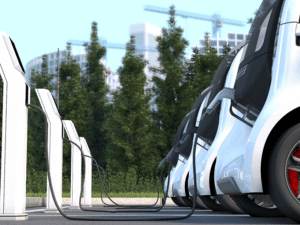How the IONITY and Schneider Electric Partnership Drives eMobility While Expanding Europe’s EV Charging Infrastructure
Credit to Author: Christel Galbrun-Noel| Date: Thu, 07 Nov 2019 19:13:52 +0000
Many drivers have long been considering the purchase of an electric vehicle (EV). Concerns about the impact of gasoline and diesel-operated vehicles on the environment and the sustainability of internal combustion engine (ICE) designs have many searching for a long-awaited alternative. The advantages of EV clean mobility, reduced carbon emissions and lower mid-to-long term operations and maintenance costs are attractive. However, many drivers have been reticent to commit to EVs due to a lack of charging infrastructure. They fear purchasing a vehicle that limits their freedom to travel as far as they want, when they want, because of a shortage of refueling stations. According to the UK Department of Transport, the two main reasons that consumers choose not to purchase an EV include the lack of a ubiquitous charging network and the limited distances that can be traveled on a charge.
Future EV drivers are looking for a guarantee. They want hassle-free access to EV charging when they need it. In order to address these needs, key auto makers are fostering EV adoption by joining forces to develop fast charging station networks across Europe. IONITY, a joint venture of the automobile manufacturers BMW Group, Daimler AG, Ford Motor Company and VW with its Audi and Porsche brands has committed to implementing 400 fast charging stations, with a capacity of up to 350 kW across Europe within the next 14 months. In order to accomplish this task, IONITY has chosen Schneider Electric as a key trusted partner to help develop and support the charging station solution.

A transition to EV maturation with safe, energy efficient charging stations
According to the Edison Electric Institute, global EV sales totaled about 2.1 million in 2018, an increase of 64% compared to 2017. In order to accommodate projected future expansion (the International Energy Agency predicts that global EV sales will exceed 23 million a year by 2030), charging networks will need to grow across all geographies. In Europe specifically, the IONITY initiative represents a landmark event within the EV industry. It signals the transition from an early adoption phase to a more tangible maturation stage. In addition to the expansion of the charging network, many EVs can now travel a longer distance on a single charge. Battery technology is developing rapidly and, for the 2019 model year, there are eight new EVs that can run for more than 200 miles before needing to be recharged.
A number of factors have enabled IONITY to channel significant investment commitments to bolster the European charging station network. These include a supportive public and a friendly regulatory environment, the potential for new business growth, and new energy-efficient EV charging solutions that enable, fast, safe, affordable and flexible EV charging.
Technology partner with multi-country eMobility project experience critical to success
In its search for best-in-class charging station technologies, IONITY focused on partnering with providers of reliable and highly-efficient power distribution equipment. They also required partners capable of providing high quality maintenance services across multiple countries and of coordinating with country and regional utilities to manage unique Distribution System Operator (DSO) requirements.
Schneider Electric was one of the partners asked to contribute to IONITY’s mission and is delivering 130 substations for grid connection. Schneider Electric is providing new, customized High-Power Charging (HPC) infrastructure and is responsible for the power supply, including transformers, that convert grid power from medium to low voltage within a compact charging station framework. Given the unique requirements of the IONITY charging network, which included incorporating multi country standards and regulations, and a logistically complex multi-country technology rollout, a flexible partner with experience managing tight project timelines like Schneider Electric was required.
Schneider Electric co-developed a customized Trihal transformer solution, specifically designed to address the needs of EV drivers. The requirements addressed by the new solution include:
- Dry type transformer technology that is self-extinguishing, thereby reducing the risk of fires
- Reduced footprint, so that the solution could accommodate a compact-sized substation
- Internal circuitry that allows the charging of multiple EVs at once while saving energy. Instead of requiring 6 separate transformers for accommodating six EVs, the design of the Trihal circuitry allows one transformer to supply six chargers. This results in a significant reduction of energy losses compared to standard marketplace transformer solutions
End-to-end resources drive sustainability and enable European EV market development
The establishment of a fast charging network for EVs across Europe is an important building block for accelerating the rapid acceptance of eMobility. Such an initiative also represents an important step towards helping the region achieve its climate protection goals, through less consumption of fossil fuels. Schneider Electric expertise in the areas of fleet, highway and at destination recharging infrastructures, cybersecurity consulting, power distribution, energy management and asset management systems, will help to lay the groundwork for the integration of EV and the power support infrastructures.
To learn more about how Schneider Electric e-mobility systems are enabling automobile industry modernization, visit our Automotive and Mobility Solutions web site.
The post How the IONITY and Schneider Electric Partnership Drives eMobility While Expanding Europe’s EV Charging Infrastructure appeared first on Schneider Electric Blog.